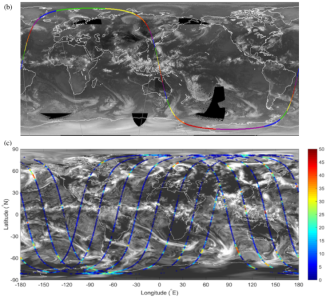Operational Assimilation of Space-borne Radar and Lidar Cloud Profile Observations for Numerical Weather Prediction

The main objectives of this project were to develop the tools and structure to enable routine EarthCARE radar and lidar observations of clouds to be assimilated in the ECMWF Numerical Weather Prediction model and to prepare for the real-time monitoring of the observations to detect instrument degradation or errors. This required adjustments of assimilation tools, such as the observation operators, observation error definition, quality control, data screening and bias correction.
Several key advances were made, including a new fast way to account for cloud overlap, increases in operator efficiency and a wholly flow-dependent specification of the observation error. Based on the in-house automatic monitoring system, data monitoring experiments for cloud radar and lidar observations using CloudSat and CALIPSO data have suggested that the skill of monitoring system to detect a degradation in the quality of observations is improved when the FG departures are used compared to using just observations alone. The performed assimilation studies have demonstrated the potential that assimilation of cloud information from active sensors could offer. The feasibility to assimilate such observations directly into 4D-Var system in the global scale was demonstrated for the first time, with improvements in forecast skill shown for temperature and wind. Gaining benefit on forecast skill by including new observations into a well-established observing system is extremely difficult, so the results presented here are extremely promising and warrant the opening of many avenues of further research that were not able to be explored here. The sensitivity of the results to the prescribed observation error was shown to be large and it is envisaged that relatively easy gains in forecast skill would be achievable through careful tuning. The behaviour of the assimilation system for different regimes, for example the effect of cloud radar and lidar on convective situations, requires further work and could result in improvements in the forward operator assumptions or screening criteria.
No attempt was made to optimise the pre-processing of the observations, so investigations of the averaging scale and possible thinning of the observations in both the horizontal and vertical would be beneficial. Finally, investigation of the synergistic benefit of cloud radar and lidar observations to other observation types related to clouds, in particular the all-sky radiance assimilation framework used at ECMWF, is worthy of further research in the future.
